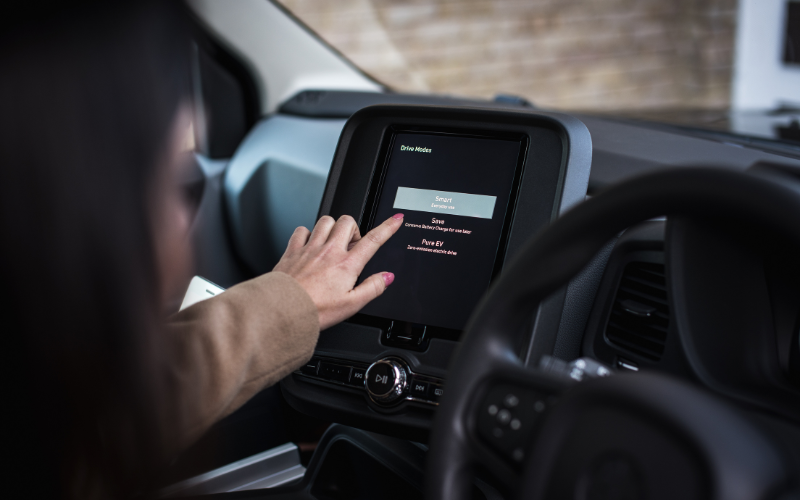The Cab of The Future: How the TX Taxi Could Help Futureproof Your Business

As the motoring industry looks ahead to the future, it’s often asked how this will look regarding electric taxis. In this article, we take a look at how the LEVC TX Taxi could help ensure your business keeps up with the change.
With the move towards electric motoring, the taxi industry continues to change. Changes to Government legislation are a key factor causing unpredictability in the industry.
As these changes begin to take shape, electrically powered taxis, such as the LEVC TX, will have a real impact on how the industry adapts.
Read on to learn how the TX can help futureproof your business.
Government Changes
In 2020, the UK Government announced a new plan to support the electrification of the automotive industry.
A £1.8 billion investment was pledged to help support the infrastructure for zero-emissions vehicles, as well as grants to increase access.
As part of a two-stage plan, the Government first announced that sales of new petrol and diesel cars in the UK will be banned by 2030. The second step will see all new cars and vans emit zero tailpipe emissions from 2035.
It may seem far away now, but we all know how fast the years can fly by. That’s why we recommend starting to think about electrifying your fleet now.
The TX taxi is a great option for those considering moving towards electrified taxis. It features a fully electric powertrain with a range extender, providing you with several driving mode options. The range extender is a small 1.5-litre petrol engine, which you can switch on to save your battery’s energy.
Smart mode is the default operating mode that prioritises using your battery’s energy primarily before engaging the range extender. Save mode on the other hand activates the range extender to conserve your current battery level for later use.
Pure EV mode uses solely electric power to run the TX, producing zero emissions. This is particularly handy for driving around in the city, which is the case for many fares. The Pure EV mode helps you avoid having to pay Low Emission Zone (LEZ) or Clean Air Zone (CAZ) charges.
Contributing to a green, high-mileage fleet
Both private hire and hackney cabs make up the most popular high-mileage fleets on the roads. They drive up to four times more miles than the average car according to the World Economic Forum.
This gives taxis great potential when it comes to influencing emissions and achieving a greener environment. Electrically driven taxis such as the TX have zero-emissions capability and therefore, play a significant part in helping to reduce CO2 emissions. Lowering emissions also improves public and environmental health, benefitting everyone.
By owning a TX, you could be a part of this revolution towards more sustainable motoring, all while reaping the benefits. You can expect lower running costs, reduced maintenance, and an improved reputation for your business.
Keeping up with the times
ZEC refers to Zero Emissions Capable vehicles, which describes the TX taxi. They are becoming used increasingly often in the taxi industry in more highly polluted areas such as London.
Mayor Sadiq Khan commented on the future of London’s black taxis last year at the London Assembly, saying:
“I am proud that since Transport for London (TfL) introduced a zero emission capable (ZEC) licensing requirement for new taxis in 2018, and despite challenging economic conditions as a result of the pandemic, 43 per cent of London’s taxi fleet is now ZEC.
Tfl and I have supported the taxi industry with delicensing payments totalling more than £30m to encourage the owners of older, more polluting vehicles to remove them from the fleet. TfL also continues to contribute to the £7,500 grant off the purchase price of any new ZEC taxi. In addition, TfL has installed more than 300 rapid charge points, with a significant number of these dedicated to taxi-only use.
LEVC continues to manufacture its TXe ZEC taxi and has stated that its recent announcement of a planned restructure ‘will provide support for the business as it enters the next crucial phase of its development and a planned return to sustainable profitability and growth.”
A wider change across the country in similarly congested cities as the UK can be expected in a nearby future. Other cities such as Bristol, Greater Manchester, Leeds, Glasgow, Edinburgh, and Newcastle have already introduced their own Low Emission Zones (LEZs) and Clean Air Zones (CAZs), to standardise sustainable motoring.
Part of the Government’s strategy will also be to support the UK’s growing network of public charge points, which currently sits at around 35,000. You can view all the public charging stations by using Zap Map's interactive chargepoint search.
We hope you enjoyed this article. For more interesting news and advice, keep an eye on our newsroom.
Want to explore the TX further? Head to the LEVC hub.
